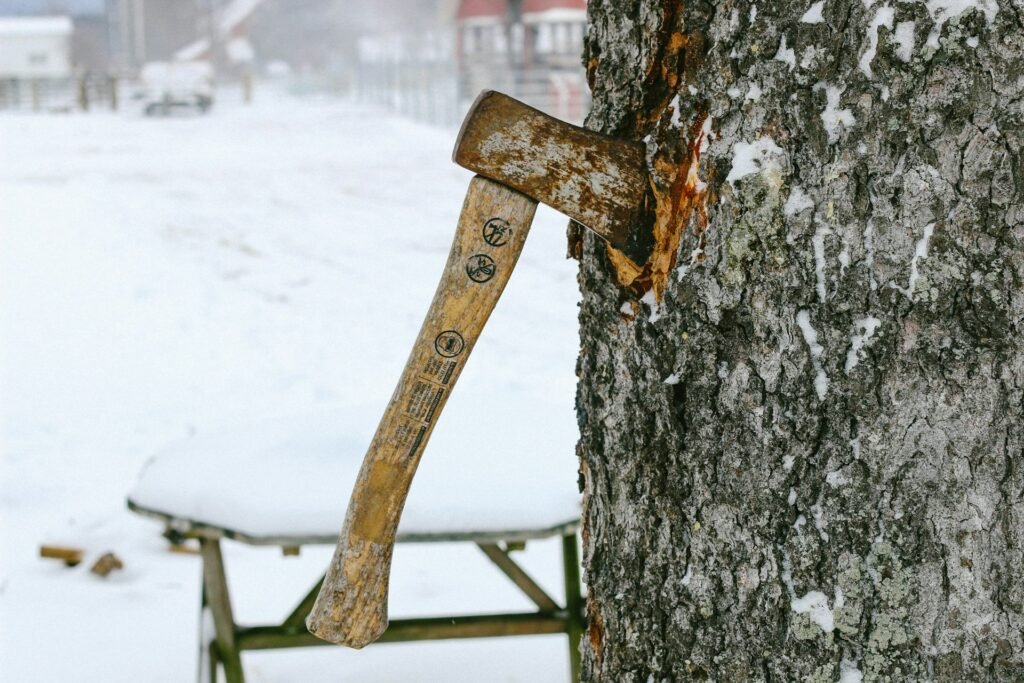Effective stormwater management is an integral and indispensable component of urban planning and environmental sustainability in your area. As cities undergo expansion and development, the natural landscape frequently undergoes transformations, resulting in the proliferation of impermeable surfaces and an elevated susceptibility to flooding. In this context, the role of tree services in stormwater management becomes paramount. Trees, endowed with intricate root systems and ecological functions, play an indispensable role in effectively alleviating the repercussions of stormwater runoff. In the following discourse, we will delve into the diverse and intricate ways in which tree services actively contribute to the facilitation of efficient stormwater management.

Water Absorption and Soil Stabilization
A fundamental function within the realm of stormwater management is the remarkable capacity of trees to absorb and decelerate the flow of water. The intricately woven root systems of trees serve as nature’s sponges, adept at absorbing rainfall and moderating the velocity at which water makes contact with the ground. This not only helps prevent soil erosion but also allows water to infiltrate the soil gradually. The crucial role of tree roots extends to soil stabilization, acting as a linchpin in diminishing the risk of landslides and ensuring efficient water absorption into the ground.
Canopy Interception
The canopy of a tree serves as a natural shield against rainfall. When rainwater hits the leaves and branches, a significant portion is intercepted and evaporates back into the atmosphere. This process, known as canopy interception, helps reduce the volume of water reaching the ground during storms. By minimizing the impact of heavy rainfall, trees contribute to the prevention of flash floods and erosion.
Reduction of Runoff Volume and Peak Flow
Urbanization frequently results in the proliferation of impermeable surfaces, including roads, parking lots, and rooftops in your area. These surfaces prevent water from soaking into the ground, resulting in increased runoff. Tree services address this issue by strategically planting and maintaining trees in urban areas. The presence of trees helps reduce the volume of stormwater runoff by facilitating water absorption and promoting gradual infiltration. Furthermore, the canopy and foliage of trees serve as natural barriers, effectively decelerating the peak flow of stormwater and thereby mitigating the potential risk of flooding.
Filtering and Purification
Tree roots not only absorb water but also act as natural filters. They capture and retain pollutants present in stormwater runoff, including sediments, heavy metals, and chemicals. As water moves through the soil and root systems, these impurities are filtered out, contributing to improved water quality. Tree services play a vital role in selecting appropriate tree species for urban environments, considering their ability to withstand pollution and effectively filter stormwater.
Creation of Green Infrastructure
The concept of green infrastructure involves using natural elements, such as trees and vegetation, to manage stormwater in a sustainable and environmentally friendly way. Tree services are instrumental in the planning, implementation, and maintenance of green infrastructure projects. This may include the strategic placement of trees in urban spaces, the creation of green corridors, and the development of tree-lined swales to manage stormwater runoff effectively.
Community Engagement and Education
Effective stormwater management requires the collaboration of communities and local authorities. Tree services can actively engage with communities to raise awareness about the importance of trees in stormwater management. Educational programs, workshops, and outreach initiatives can empower residents to contribute to a healthier urban environment by planting and preserving trees on their properties.
In conclusion, the role of tree services in stormwater management goes beyond mere aesthetics. Trees are indispensable allies in the battle against urban flooding and environmental degradation. By promoting water absorption, reducing runoff volume, and enhancing water quality, trees contribute significantly to the creation of resilient and sustainable urban landscapes. As cities continue to grow, it becomes increasingly vital to recognize and prioritize the role of tree services in stormwater management for the benefit of both the environment and the communities they serve.

